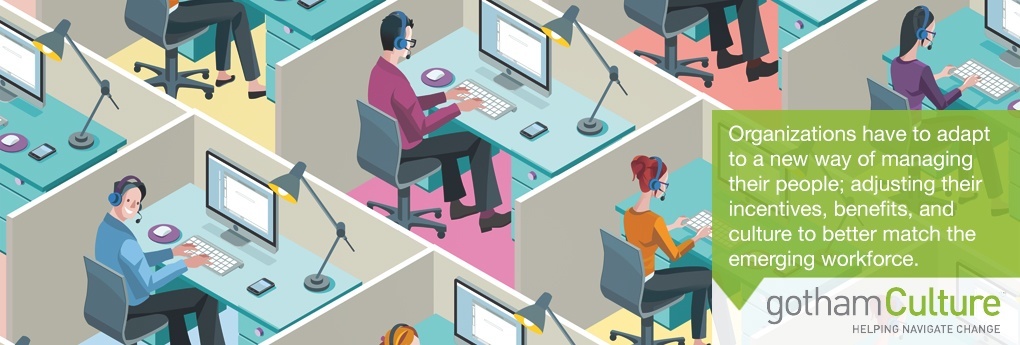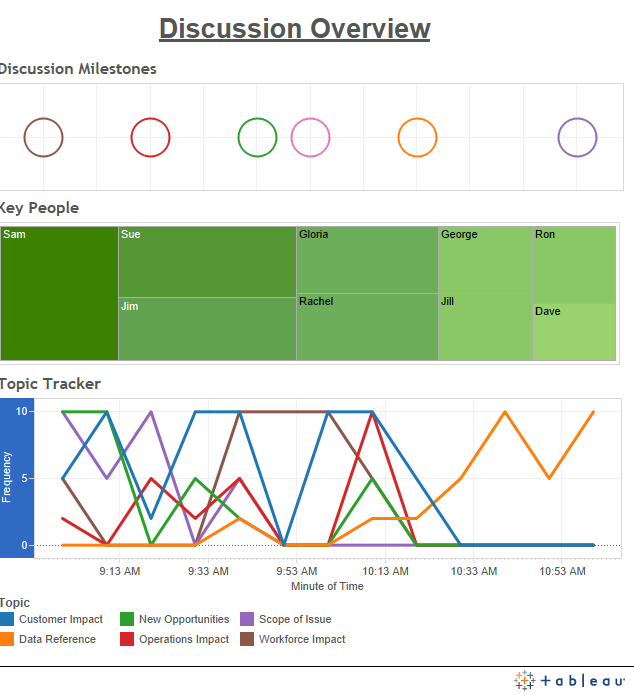“If you had to identify, in one word, the reason why the human race has not achieved, and never will achieve, its full potential, that word would be ‘meetings.” – Dave Barry
No one likes sitting through a pointless office meeting.
Poorly run meetings can be a ball and chain to many organizations. They take up time when there’s work to be done, they’re often unproductive, and in many cases, altogether pointless. In fact, Mattel’s former CEO recently blamed meetings as the major factor behind their lack of an innovative culture.
So, the question is: Why do organizations spend so much time in formal meetings? How do they affect the engagement levels of the team? And is there a better way?
We asked our team to share their ideas and experiences around corporate meetings, and whether they can really have such a negative effect on organizational culture and employee engagement.
Anton Rius, Digital Marketing Manager
 I’ve been a part of some pretty terrible meetings. They would last for 2 or more hours, dragging on and on without ever coming to an actionable conclusion. Everyone shared ideas and participated, but no decisions were made and no tasks were assigned. I think being in a good meeting room such as conference rooms in new york, makes the ideas flow better, rather than being in a dingy old office!
I’ve been a part of some pretty terrible meetings. They would last for 2 or more hours, dragging on and on without ever coming to an actionable conclusion. Everyone shared ideas and participated, but no decisions were made and no tasks were assigned. I think being in a good meeting room such as conference rooms in new york, makes the ideas flow better, rather than being in a dingy old office!
That’s the big problem with meetings, in my opinion. They are often used as a way for people to discuss their goals while diffusing the ownership of the decision. Rather than empowering employees to make executive decisions about their work, meetings are used to gain collective approval from people who may not have a full understanding of the problem, or the expertise to make a good decision.
And if meetings are meant to bring people together to tackle problems quickly and collectively, then this behavior does the opposite: It slows business down to a snail’s pace.
The fact is; the average American office worker wastes a lot of time on everything other than work. Between shovels full of pointless email, office banter, the phone ringing, and all of the other distractions that happen at the office, it’s a wonder how any work actually gets done!
Adding additional, pointless meetings on top of that takes even more time away from your team members when they could be spending that time on more important tasks.
Samantha Goldman, Associate
 Oftentimes in organizations, meetings happen because of inertia; it’s the way it’s always been, and the people who realize they’re not productive don’t necessarily have the power to stop the meeting from happening.
Oftentimes in organizations, meetings happen because of inertia; it’s the way it’s always been, and the people who realize they’re not productive don’t necessarily have the power to stop the meeting from happening.
In some organizations, the meetings are a remnant of the days when communication and decision-making only happened face-to-face. Today, due to technology and the faster pace of work and email/chat communication, most meetings are pointless.
But, before you decide to cancel all of your company’s meetings, take an inventory of what is actually happening in each meeting and whether some of that communication is repetitive. Maybe the communication would be better served through another channel, such as email.
Then, it’s critical to think about what actually could be happening in that face-to-face meeting instead, such as: group decision making, developing strategy, best practice sharing, highlighting work well done, gathering feedback, team trust building and/or professional development.
The key is to align the medium to the message: What do we absolutely need a meeting for, and then go from there. Make small experiments and gather feedback and see how these changes are affecting engagement levels. It’s more an art than a science, and should reflect the values of the organization and the team, the type of work you need to get done and your timeline for getting it done.
What works in one organization and department may not work in another, so be sure to constantly check in and see how it’s going.
Mark Emerson, General Manager
 I was a consultant for a major telecom that will remain nameless, but in my opinion, the endless meetings were a complete waste of time and contributed to a total lack of execution on multiple fronts.
I was a consultant for a major telecom that will remain nameless, but in my opinion, the endless meetings were a complete waste of time and contributed to a total lack of execution on multiple fronts.
And the politics! Everyone and their mother had to be invited to these meetings, which meant that introductions alone took 10-15 minutes. The executives did almost all of the talking and the minions either took notes or pretended to listen while playing on their phones/laptops.
In almost all cases, these meetings involve far too many people, devolve into power plays and give a veneer to the idea that the organization is solving issues and moving forward, rather than just kaffeeklatsches.
Having said that, there have been well-organized meetings where there was a meeting coordinator. These meetings were on-topic, focused, short, and everyone walked away with actionable items with deadlines. This meant that no one was at the meeting just taking up space. In one case, the meeting organizer even dis-invited three people after the first organizational meeting because they were not given any actionable items. The following meetings were then just as productive as team members delivered and course corrections were made.
Even if these meetings were not in person, they were just as productive. In most cases there was a one-page agenda sent out beforehand, all electronics were banned, and PowerPoint presentations were limited to five slides. The coordinator captured everything and distributed the materials, making it a more free-flowing discussion that brought out great insights and ideas.
Cary Paul, Senior Associate
 Often, organizations spend so much time in formal meetings because it is comfortable. People love structure and meetings are one of the last bastions of structure in American business.
Often, organizations spend so much time in formal meetings because it is comfortable. People love structure and meetings are one of the last bastions of structure in American business.
Think about children. We are always hearing that children crave discipline and structure. We never grow out of that, and meetings give us that structure.
The intent of meetings is spot-on. Really. While the meeting may be unnecessary, too long, structured poorly, boring, or include the wrong people – the BASIC idea behind the meeting—every meeting—is sound and justifiable: Sharing information. Making decisions. Keeping on track. Getting new ideas. All critical functions of a company, right there in a comfortable package that everyone knows how to behave in.
And because of our hardwired need for structure, everyone knows how to behave. Meetings are muscle memory for people; they play their roles and all is well.
A lot of criticism has circulated around the engagement levels of team members due to bad meetings. While they can turn people off, meetings can have a positive effect on engagement, if done correctly.
Engagement equals action, and meetings are held when we are getting ready to act.
Is there a better way to run meetings? Absolutely. Here are a few ideas for making your meetings more productive:
- Have everyone read their notes ahead of time, and the meeting becomes just a 20-minute decision making process. There’s less time sitting through presentations, and more time spent on productive, action-oriented activity.
- Find new and creative ways to engage people in your meetings. Involving all the members of your team amps up the participation level and gets ideas flowing.
- Remember: meeting planning comes from the outset. Two clear components must be determined. WHY are we having this meeting, and WHO should be there? Every person should have a clear and distinctive role they play and a good reason to be involved, or not be there at all.
Your Turn
So, what do you think? Are meetings getting a bad rap based on a few peoples’ bad experiences? What advice can you share about creating a more engaging, actionable meeting? Remember that first impressions are a big thing, some companies may even go to the extreme and look into the Best limo service in Alexandria VA to impress potential clients! We’d love to hear your thoughts!





 Engagement from employees first starts with Leadership defining and embodying a culture of camaraderie about and around what the firm stands for and how things get done. We at gothamCulture focus on commitment, integrity and maniacal pursuit of excellence. You can feel it and see it in how the Partners speak to clients, how project scope and product/service quality is assessed, and in the high performance expectations set upon each member of the firm, at every level, from Intern to Sr. Associate to Partner.
Engagement from employees first starts with Leadership defining and embodying a culture of camaraderie about and around what the firm stands for and how things get done. We at gothamCulture focus on commitment, integrity and maniacal pursuit of excellence. You can feel it and see it in how the Partners speak to clients, how project scope and product/service quality is assessed, and in the high performance expectations set upon each member of the firm, at every level, from Intern to Sr. Associate to Partner.






